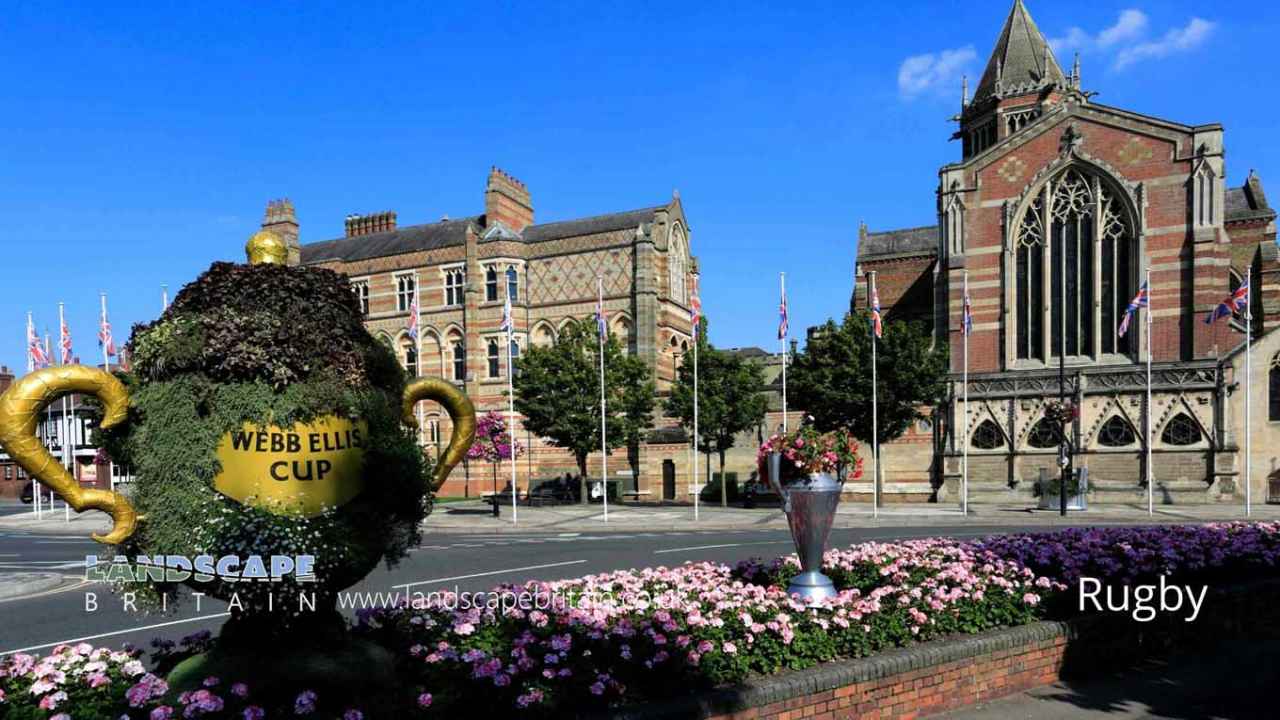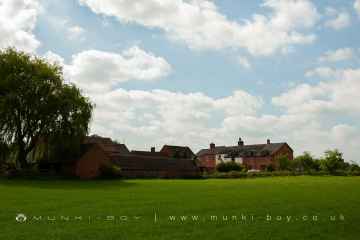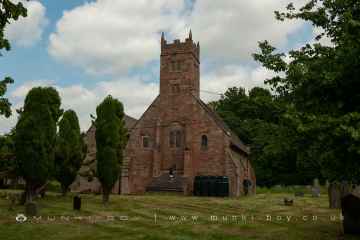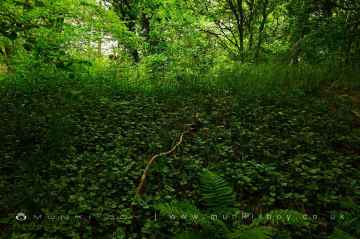Rugby is a Town in the county of Warwickshire.
Rugby is a town in Warwickshire, England. It is located on the River Avon.
Rugby is best known for being the birthplace of rugby football.
The town was founded in the early 12th century. Rugby School was founded in 1567 as a provision in the will of Lawrence Sheriff, who had made his fortune supplying groceries to Queen Elizabeth I of England. Since Lawrence Sheriff lived in Rugby and the neighbouring Brownsover, the school was intended to be a free grammar school for the boys of those towns.
There are great places to visit near Rugby including some great towns, villages, historic buildings, country parks, historic monuments, ancient sites, old mines, geological features, castles, ruins, bluebell woods, woodlands, lakes, hiking areas and airports.
There are a number of towns near Rugby including Atherstone, Nuneaton, Kenilworth, Rugby, and Bedworth.
The area around Rugby features a number of interesting villages including Baxterley, and Burton Dassett.
Don't miss Baxterley Village Church's historic buildings if visiting the area around Rugby.
There are a several good country parks in the Rugby area like Hartshill Hayes Country Park, Draycote Water, and Burton Dassett Hills.
Hartshill Castle is one of Rugby's best, nearby historic monuments to visit in Rugby.
Places near Rugby feature a number of interesting ancient sites including Hartshill Tumulus.
There are a several good old mines in the area around Rugby like Hartshill Diorite Pits.
Hartshill Diorite Pits is one of Rugby's best, nearby geological features to visit in Rugby.
Kenilworth Castle is one of Rugby's best, nearby castles to visit in Rugby.
Don't miss Kenilworth Castle's ruins if visiting the area around Rugby.
There are a number of bluebell woods near to Rugby including Cawston Spinney and Cawston Fox Covert.
The area around Rugby's best woodlands can be found at Cawston Spinney and Cawston Fox Covert.
Places near Rugby feature a number of interesting lakes including Draycote Water.
The area close to Rugby boasts some of the best hiking areas including Burton Dassett Hills.
Don't miss Coventry Airport's airports if visiting the area around Rugby.
Rugby History
There are some historic monuments around Rugby:
Places to see near Rugby
History of Rugby
During the English Civil War, King Charles I passed through Rugby in 1642 on his way to Nottingham, and 120 Cavalier Horse Troops reportedly stayed at the town, however the townsfolk were sympathetic to the Parliamentarian cause, and they were disarmed by the Cavalier soldiers. Later, in 1645, Rugby was strongly Parliamentarian, and Oliver Cromwell and two regiments of Roundhead soldiers stayed at Rugby in April that year, two months before the Battle of Naseby in nearby Northamptonshire. The growth of Rugby was slow, due in part to the nearby markets at Dunchurch and Hillmorton which were better positioned in terms of road traffic. In 1663 Rugby was recorded as containing 160 houses with a population of around 650. By 1730 this had increased to 183 houses, with a population of around 900. Rugby’s importance and population increased more rapidly during the late 18th and early 19th century due to the growing national reputation of Rugby School, which had moved from its original location at a (now long vanished) schoolhouse north of St Andrew’s Church, to its present location south of the town centre by 1750. By the time of the first national census in 1801, Rugby had a population of 1,487 with 278 houses. By 1831 this had increased further to 2,501 in 415 houses. This growth was driven by parents who wished to send their boys to Rugby School, but were unable to afford the boarding fees and so took up residence in Rugby. More rapid growth started with the coming of the railways: In 1838 one of the earliest inter-city railway lines, the London and Birmingham Railway was constructed around the town, which in 1840 made a junction with the Midland Counties Railway at Rugby. By 1850 there were five railway lines meeting at Rugby, with more than sixty trains a day passing through Rugby railway station. The railway junction at Rugby soon became one of the busiest and most important of the era, and the influx of railway workers and their families rapidly expanded the population. Rugby’s population grew to nearly 8,000 by 1861. reaching nearly 17,000 by 1901.



























